Drinking Vermouth in Spain: A guide to doing It like a local
My husband, Caleb, and I ADORE Spanish vermouth. When we go to Spain, we under-pack our backpacks and forfeit bringing some clothes just to leave room to bring bottles of the stuff home. You know, priorities and stuff.
After drinking it all over the country, we’ve made some embarrassing mistakes that basically made us wear a “we’re tourists” sign on our heads, and we don’t want that for you. In this guide, we’ll share all our insider knowledge on how to drink vermouth in Spain so you can drink and enjoy it like a local!
Cheers!
MOST IMPORTANT FACTS: You typically drink vermouth just before lunch and the best places to drink it have signs for “vermut de grifo” which is vermouth on tap.1
Culture Craving Couple contains affiliate links and is a member of the Amazon Services LLC Associates Program. If you make a purchase using one of these Amazon links, we may receive compensation at no extra cost to you. Thanks for supporting us! You can see our disclosure policy.
Time, Types and How to order: vermouth 101
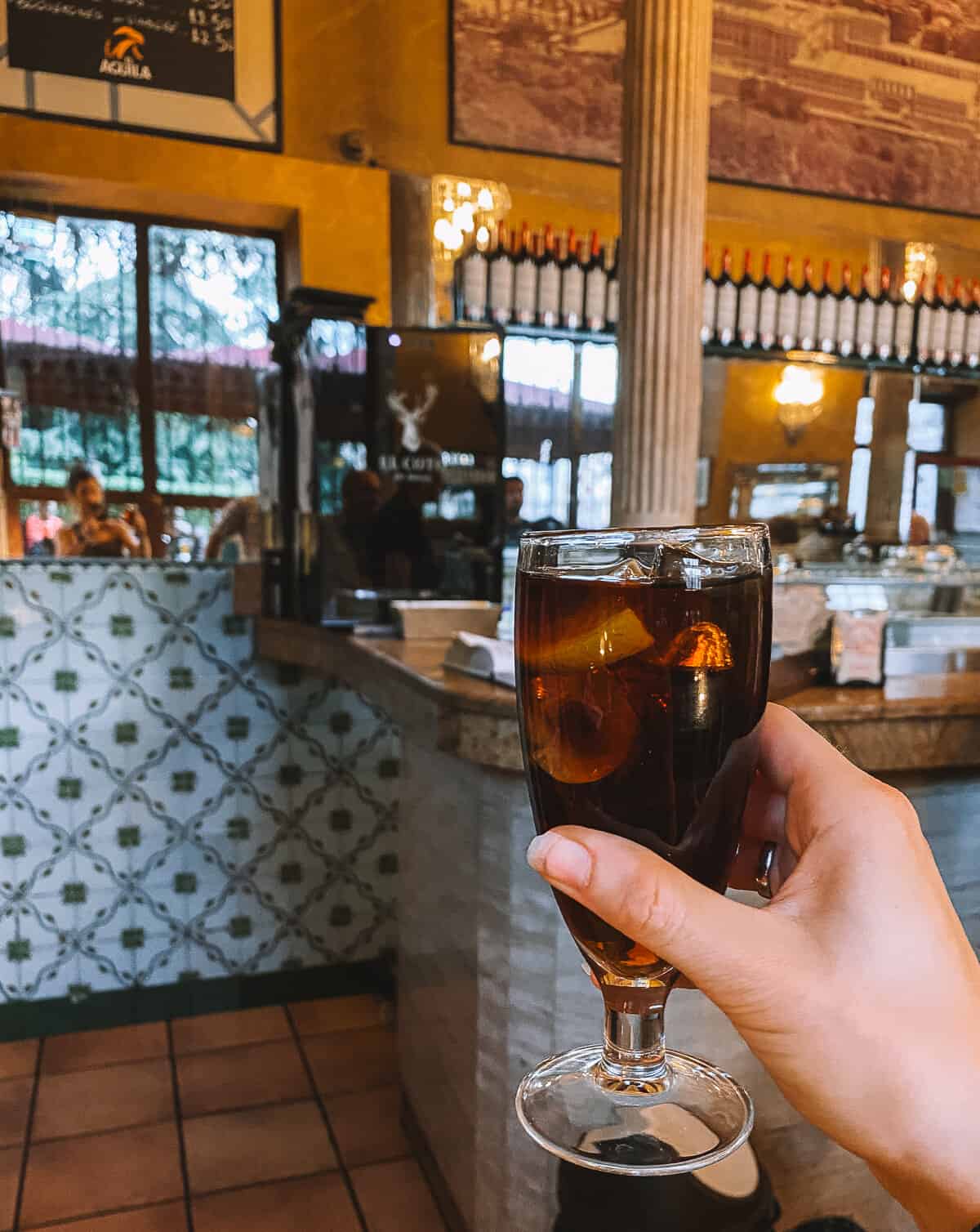
The Time
Vermouth is an “aperitif,” which means it’s typically consumed before a meal to help with digestion and get you ready for the upcoming meal.
Of course, you can drink vermouth any time of the day – not just before a meal, but Spaniards recognize something called “la hora de vermut.” This happens around lunchtime (12-2 pm-ish) each day of the week and is the traditional time to drink our favorite boozy beverage.
If you’re wanding around some of the neighborhoods in Madrid, you’ll probably see people wall-to-wall (sometimes even kiddos under the legal drinking age with their parents) in the vermouth bars or some of the best tapas bars celebrating this hour, which munching on a pre-lunch snack like olives or Manchego cheese, and we are SO here for it.

Types Of Vermouth You Can Order
Like Italian vermouth, Spanish vermouth comes in different colors and levels of sweetness, but the most common vermouth you will find in Spain is “vermut rojo,” which is sweet, red vermouth.
Another one you may find is “vermut blanco,” which is sweet white vermouth. It is not as common, but if you find it, we recommend trying to because we REALLY love it.
FUN FACT: most vermouth is made from white wine – even the dark Spanish red stuff!
You may also find rose vermouth or golden vermouth!
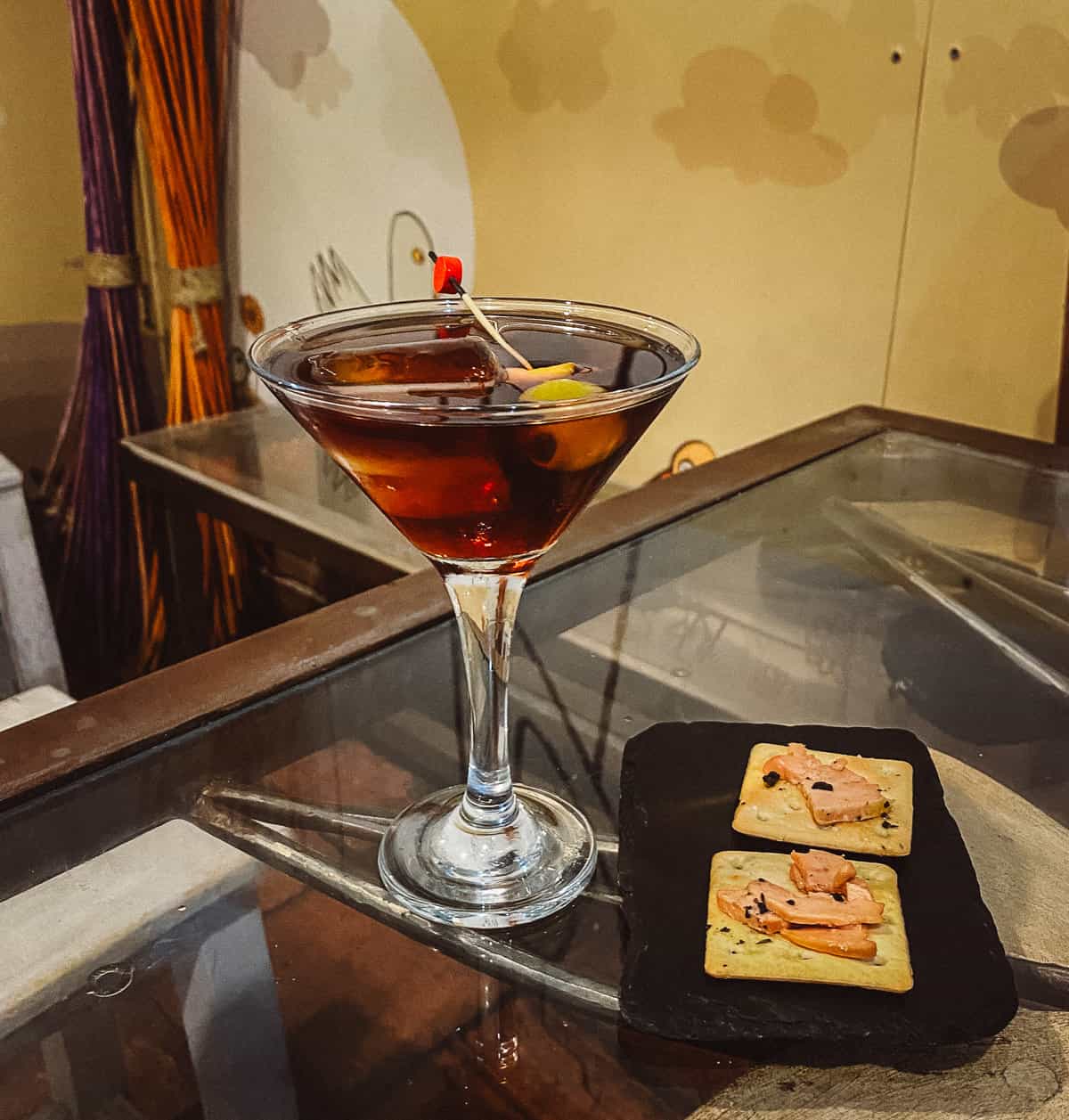
How to Order
Although there are a gazillion vermouth bars in Spain, they are not all equal, and we learned that the hard way when we ordered vermouth and “Martini” was poured. Yes, the bottled Italian vermouth that is not Spanish at all. It’s an open wound that we aren’t ready to talk about yet, okay?
The most important thing that Caleb and I look for is a sign out front/on the door that says “vermut de grifo.” This means “vermouth on tap” and is a sign that they serve excellent vermouth right from a barrel and not some pre-bottled stuff.
When you go into the bar, simply order the “vermut de grifo.” Sometimes, you will also see “vermut artisano,” which is usually a vermouth cocktail mixed with something like gin and Campari. It’s also a go-to when we see it on a menu, like at La Concha in Madrid, and it’s usually a safe bet.

From there, you could start ordering some different flavors to test out. Or, do a vermouth tasting in Madrid so you can try a bunch of different options and know what to order at the bars.
Caleb and I think that drinking vermouth straight is the way to go, but if you want to lighten it a bit, you can ask for it with “sifon,” which is a little bit of club soda added.
TAYLOR’S TIP:
we can’t write a guide on how to drink vermouth without mentioning Gilda! If you see “Gilda” on the menu, we recommend ordering this to go with your vermouth. It’s a toothpick of salty and briny olives, pickled peppers, and anchovies, and we think it’s the best thing ever paired with sweet vermouth.

Our Favorite Spanish Vermouth Brands And Bars
We have tried a lot of vermouth, and one of our favorites is from Taberna La Concha in Madrid, but you can *only* get it there. If you want to try some other brands you can get across Spain, our top 4 other brands are:
- El Gallinero (it’s in our home bar right now!)
- Padro & Co (the bottles are so pretty!)
- Mata
- Dos Deus
TAYLOR’S TIP:
look for “Vermouth Reus” on the bottle because Reus, close to Barcelona, is the town that originally started making vermouth before all of Spain caught onto the now-very-trendy drink.
In terms of bars, we think that the best vermouth bars are in Madrid, and we love Taberna La Concha, La Sastreria, Vermuteria La Bolita Negra, and La Violeta.

sweet and herbal: the taste of vermouth
Spanish vermouth is sweeter than Italian vermouth, which is why it is so much easier to drink, at least to Caleb and I. Vermouth is made with spices, herbs, and botanicals and then has caramel added, which is where vermouth gets its sweetness and color from.
You’ll taste the caramel when you drink it!
Another “must” for vermouth is to use wormwood, which is the same as absinthe. Don’t worry- you won’t go crazy, and it does not taste like anise. In fact, the name “vermut” comes from the German word “wermwut,” which means wormwood – it’s a non-negotiable!
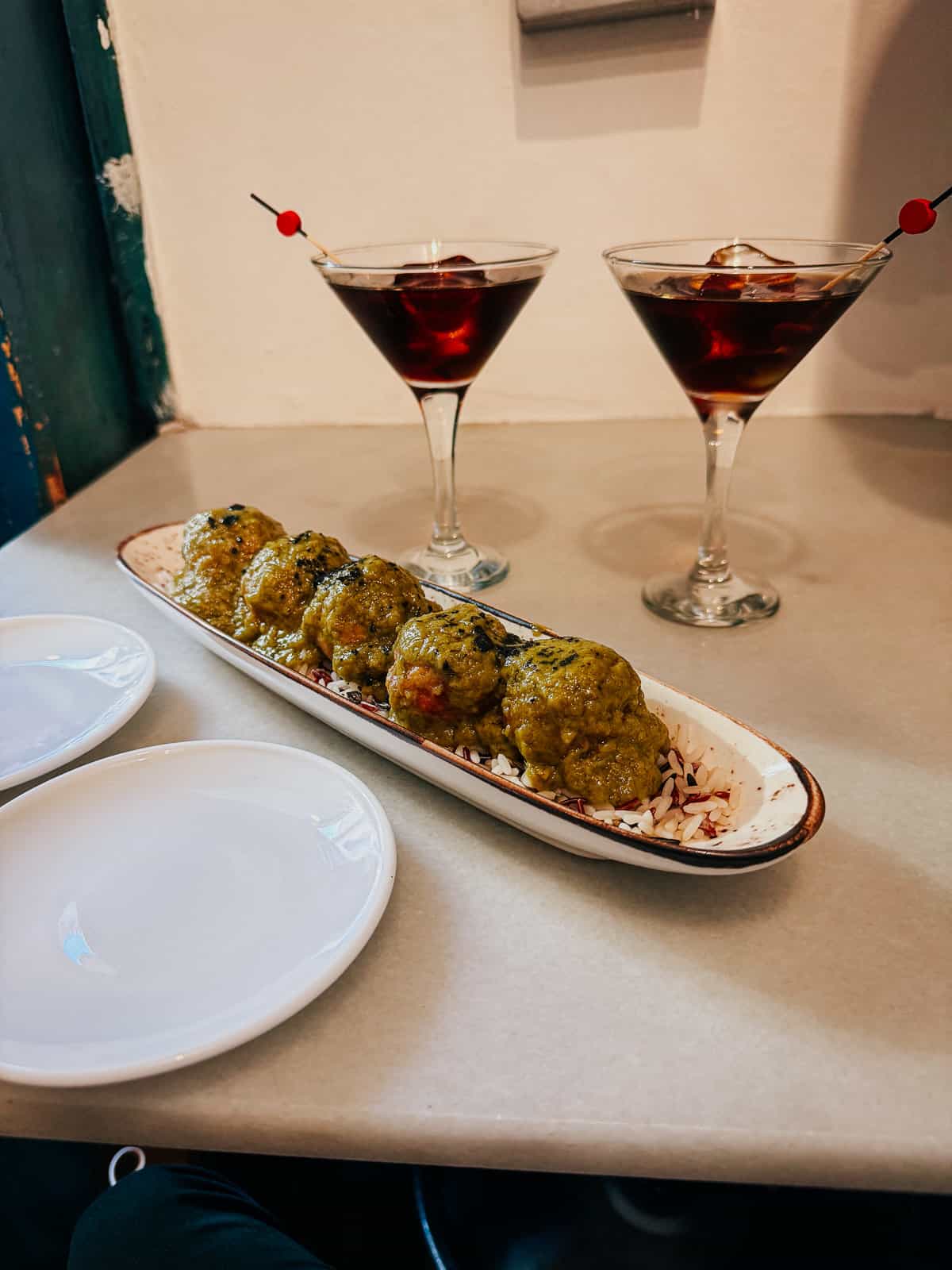
We find vermouth to usually have that caramel flavor with notes of cinnamon, clove, cardamom, and orange (from the orange peels in the vermouth.) There is always a note of bitterness from other botanicals. It’s sort of like cold-mulled wine but a little bitterer, and you will love it, we promise.
White varieties are also sometimes made with chamomile, giving it a floral taste that we love. White vermouth also tends to be a little drier than red vermouth, but we have found both to be pretty balanced!
TAYLOR’S TIP:
the one vermouth that I personally do not like is gold vermouth as I find it VERY bitter. However, if you prefer “less sweet” things, you might want to seek this color out!

What Is Spanish Vermouth?
We always say that vermouth is kind of like the port of Portugal! It’s just white wine (most of the time, but sometimes it is red) that has herbs, spices, and botanicals added.
How Spanish vermouth is made
Once the botanicals are added, the wine is left to age in barrels until it’s ready to go and has the perfect taste.
When we did our romantic vermouth tasting in Madrid, our guide told us that you don’t smell the alcohol in vermouth like other fortified wines because the base is wine (which is already around 11-12% alcohol). Then they had a CRAZY HIGH percentage of alcohol (like 97) to get it to around 15%, which is where most vermouth percentages fall.
Since the alcohol percentage is SO HIGH, you don’t need to add much, so you don’t smell it. With something like port, they add something like 60% liquor, so you have to add MORE, and then you smell it more!
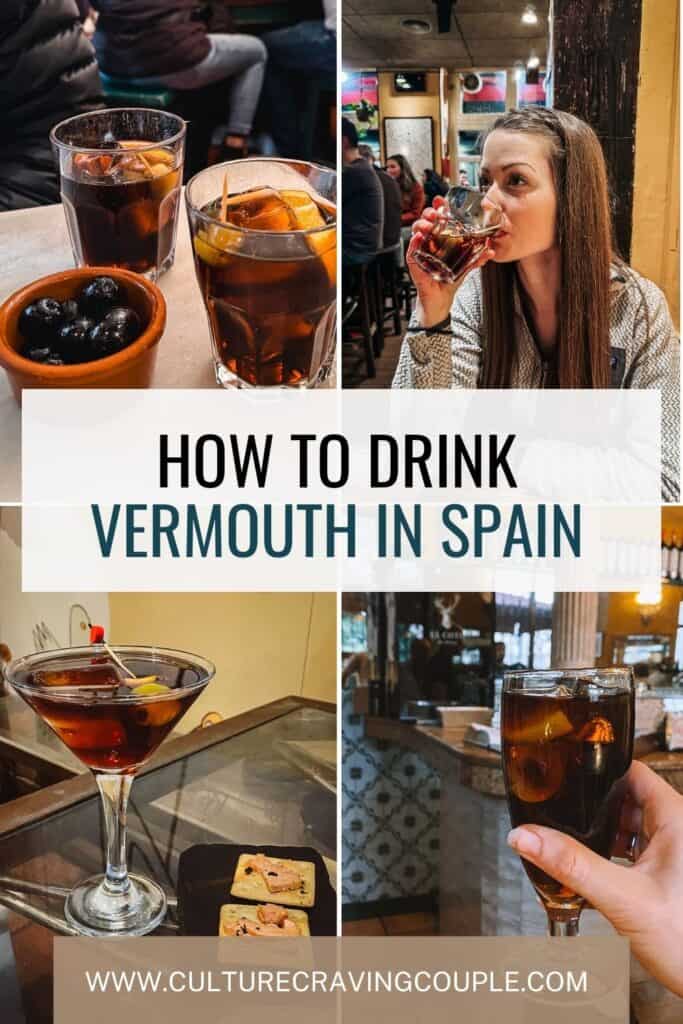

How we can help you next
What is vermouth without a little snack? Tapas are the perfect pairing for vermouth, but you have to make sure you do tapas right so you don’t look like a tourist. We have a whole guide with our best tapas tips that you must read.
Or, if you’re heading to Madrid, check out our guide on the best vermouth bars to put all this knowledge to drink…err, work.
So, how do you drink vermouth? Do you like red, white or another color?
Why Not Visit Madrid?



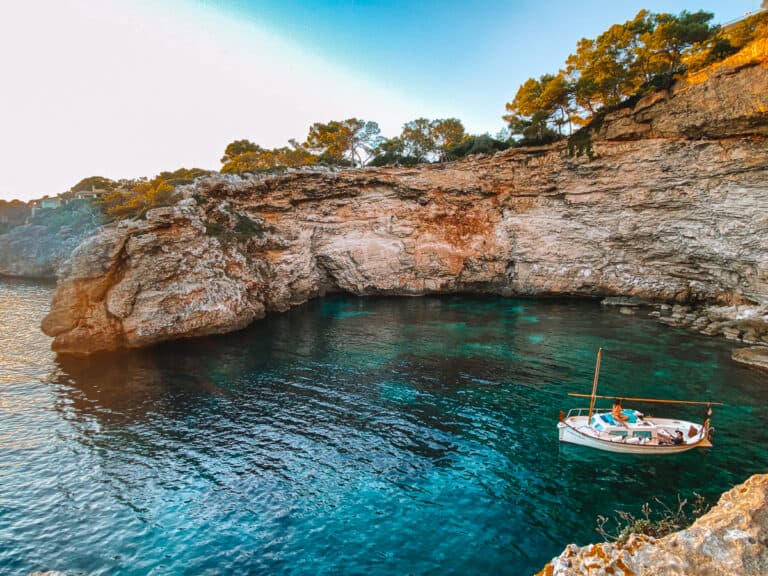




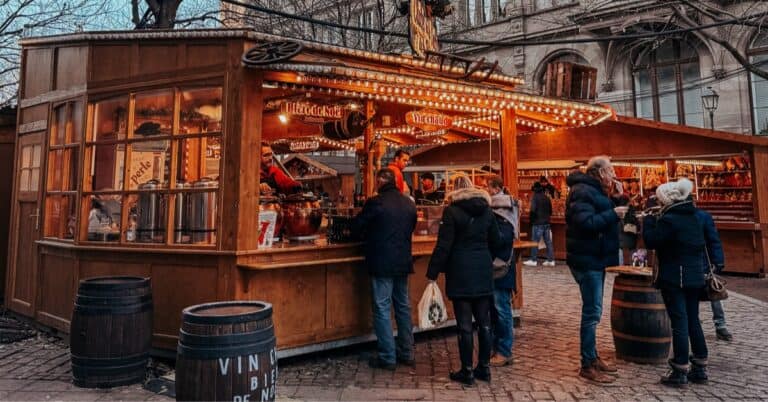
Love your articles about Madrid.
Any recommendations for vermouth and tapas bars in the Salamanca/Retiro area where we’ll be staying ?
We were introduced to Spanish “vermut” by the parents of our au pair in a small village in Huesca way back in 2001, and since have idly searched for it in US. I’ll be making a concerted effort to find it now!
Hey Lisa! So glad to hear they are helpful – it’s our favorite city!
It’s so sad that you can’t find it here! We recommend visiting “Madrid and Darracott” to buy some to take home! They have SO MUCH selection and we also did their vermut tasting which was AMAZING – highly recommend!
I actually JUST published a post about our favorite vermuterias this morning: https://culturecravingcouple.com/best-vermouth-bars-in-madrid/
And, I have a list of all our favorite tapas bars here: https://culturecravingcouple.com/best-tapas-bars-in-madrid-spain/
In terms of veroutherias, most of our favorites aren’t SUPER close to Retiro/Salamanca depending on what you consider close – you would have to walk 20-30 minutes or take the metro. We consider this “close” but you might not! On that post, “La Sastreria” is one of our favorite places for vermouth and it’s about 30 mins by walk or metro (so not super close, but it’s great!) You could also check out Bodega La Ardosa or Casa Camacho! Both are SUPER traditional and lively. They are “standing room only” kind of places. Ardosa has some really good, traditional tapas as well whereas camacho is more for drinking. La Sastreria has some snacks, but the focus there is vermouth. Sorry, I know those aren’t as close as you’re probably looking for but I don’t want to recommend anything we haven’t tried in that area!